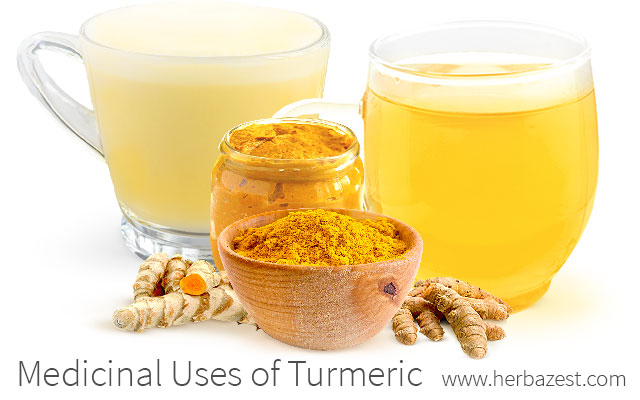The importance of turmeric can be traced nearly 6,000 years back in history. Used as a food additive, coloring agent, and cosmetic ingredient, turmeric benefits go far beyond everyday household applications. Recently, turmeric and its medicinal uses have been the subject of numerous scientific studies, as many of the herb's traditional applications are being substantiated by modern research.
Medicinal Uses of Turmeric Through History
While India possesses the greatest wealth of knowledge on ancient herbal preparations of Curcuma longa, turmeric's medicinal uses have also been observed in first-century China, as well as in many other parts of southern Asia.
THE MEDICINAL USES OF TURMERIC CAN BE TRACED BACK 6,000 YEARS TO THE AYURVEDA, SIDHA, UNANI, AND TIBETAN HEALING SYSTEMS.
The earliest known reference to turmeric's medicinal use can be found in the ancient text Atharvaveda, where turmeric is prescribed as a treatment for leprosy and jaundice. In fact, a popular custom in ancient India involved a spiritual healer spreading turmeric paste over the disease-afflicted body of the patient before performing a magical, spell-like ritual and washing the body to rid it of the illness.
Ground turmeric was also sprinkled over the skin in leech therapy to help detach the leech and promote faster wound healing. Meanwhile, Unani (Persian traditional medicine) practices include the use of turmeric for the expulsion of phlegm, as well as for the improvement of blood circulation.
In many parts of Asia, the turmeric rhizome or root is considered the most valuable healing and preventative herbal medicine out there. Besides the above-mentioned turmeric treatments, this herb has also been used for millennia for a variety of illnesses related to digestion, infertility, urinary disorders, fever, dental problems, ulcers, worms, gas relief, and menstrual pain.
Popular Turmeric Home Remedies
Because its anti-inflammatory, antioxidant, and hepatoprotective qualities have been corroborated by modern science, home remedies using turmeric have become a popular form of treatment for several prevalent diseases, like arthritis, diabetes, hepatitis, and irritable bowel syndrome. These herbal preparations are frequently combined with other herbs and drugs to potentiate turmeric's medicinal benefits.
Golden milk is perhaps the most common home remedy made from turmeric, and it can be prepared by simmering turmeric powder with a bit of cinnamon, honey, and milk over low heat. This medicinal preparation of turmeric is believed to boost the immune system, strengthen the heart, and support healthy brain function.
Another simple way to enjoy the medicinal qualities of turmeric is to prepare a warm, nighttime turmeric tea by steeping the freshly-ground root in boiling hot water and then adding spices and sweeteners to taste.
Furthermore, turmeric paste is used to stabilize blood sugar and cholesterol levels, as well as for drawing out toxins for improved liver health. It is made by mixing two parts water with one part of turmeric powder and stirring over low heat until a thick, paste-like consistency is achieved. This golden paste can be either ingested or applied topically, depending on how it is being used medicinally.
The medicinal uses of turmeric date about as far back as collective memory allows, which is a testimony to its value for herbal treatments. However, while many of turmeric's medicinal properties have been corroborated by science, its full potential for modern plant-based therapies is yet to be revealed.
Sources
- An Introduction to Ayurveda, pp. 29 - 31
- Herbal Medicine: Biomolecular and Clinical Aspects, Chapter 13: Turmeric, the Golden Spice
- The Essential Guide to Herbal Safety, p. 609
- Turmeric: The genus Curcuma, pp. 1 - 2, 413 - 425, 455




